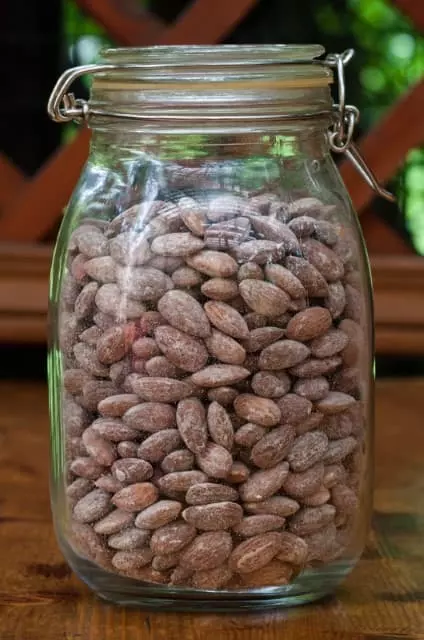The climate and the type of almond variety determine the time of ripening and harvesting of almonds, but in this article, you will find specific dates and guidelines to recognize the signs of almond ripening. Learn how and when to harvest almonds in this article.
We currently have two almond trees in our home that we planted about four years ago, and they are just beginning to bear almonds. As a young man, I worked in an almond orchard in California and learned a lot about when and how to harvest almonds, so I will give you the best tips. The world’s largest producer of almonds is the United States, followed by Spain.
The almond blossoms must be pollinated, so each year beekeepers bring many bees to California for proper pollination of the blossoms.
Table of Contents
Three Stages of Almonds
It is very important to recognize the stages that almonds go through during their development. This will allow you to harvest almonds at the right time and ensure that they have the right flavor, texture, and nutrients. If the almonds are harvested too early, they will have a soft texture and a bitter taste. I will now explain the three stages of the almond.
The First Stage of Almonds
In the first stage, the hulls of the almonds are completely closed and are in full development. As you can see in the photo below, their shells are green and completely closed, with time the shells will change color to yellow-brown.
In the Northern Hemisphere, this first stage will be in early June, these almonds are not ready to be harvested. You should harvest an almond to see what the inside of the hull looks like; it will be green and sour tasting.
You must let them ripen on the tree, so you must wait a few more weeks to have the almonds ready to be harvested.
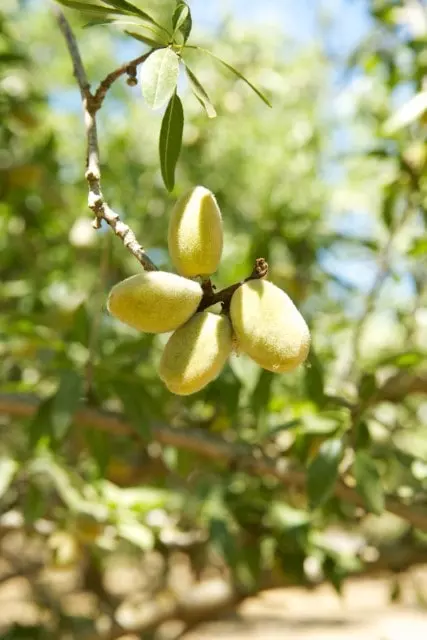
The Second Stage of Almonds
By mid-July (in the Northern Hemisphere), the almonds will look different. You will notice that most of the hulls begin to open, and you will see that the kernel (nut) is inside. Now the kernel will slowly begin to dry out in contact with the sun and wind.
You still have to wait a few more weeks to harvest the almonds, they need to ripen on the tree. As I explained before, this is when the almonds begin to dry out due to the sun and wind. They are also not suitable for consumption because of the taste and texture that the almonds will have at this stage of development.
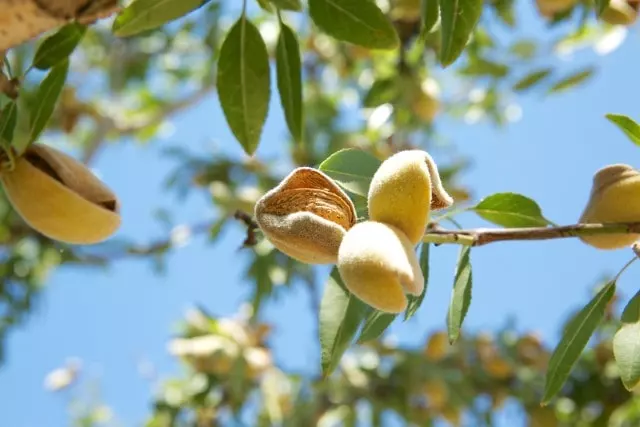
The Third Stage of Almonds
You are almost ready to harvest the almonds. Be sure to take care of the almonds from birds and squirrels because they are now attractive to animals.
Each day, the hulls of the almonds are open completely, and you will notice that the color is changing from green to yellowish. It is now the right time to harvest almonds.
The almonds at the top of the tree will be the ones that will be ready to harvest the earliest because they are the most exposed to the sun.
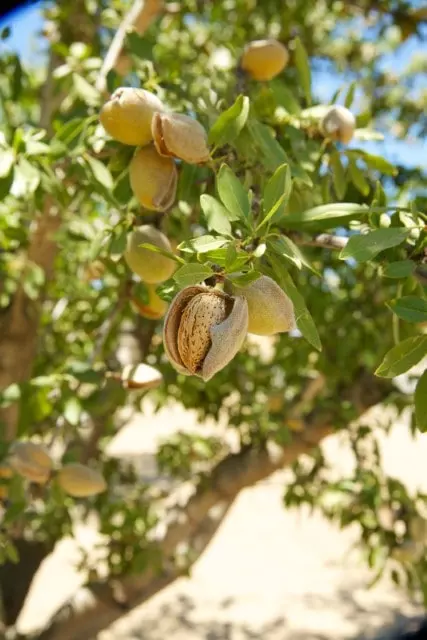
When to Harvest Almonds
When to Harvest Almonds? Almonds are ready to harvest between August and September (Northern Hemisphere). If you live in the Southern Hemisphere, you should harvest almonds between February and March. It will also depend on the climate and the location of the almond tree.
When you notice that about 75% of the hulls have started to open, it is a good indication to harvest almonds. Remember that almonds begin to ripen from the top of the tree down because those are the almonds most exposed to the sun.
Pick the almonds as soon as you see them ready to be harvested as rain could ruin the nuts, also of course there is the risk of birds and squirrels.
Collect only the almonds whose hulls have been opened, as explained in the previous paragraph. These will be the tastiest and most nutritious.
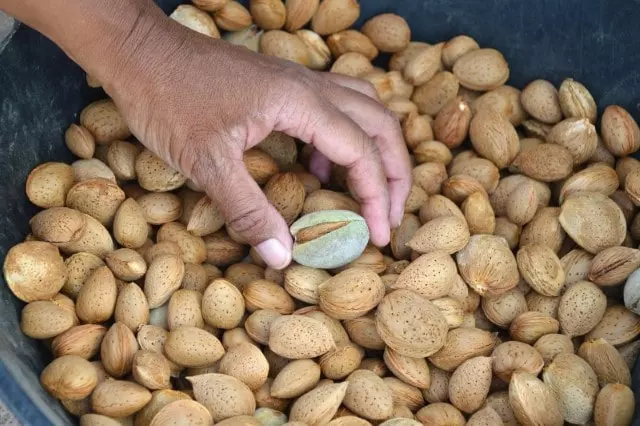
How to Harvest Almonds
How to Harvest Almonds? Harvesting almonds is very easy, first place a tarp under the tree and shake the tree so that the almonds fall. With the tarp, it will be easier to pick up the almonds from the ground.
You should also use a long stick to hit the highest branches so that the kernels fall from the tree. Alternatively, you could let the almonds fall on their own, but I do not recommend waiting so long to harvest them because of the animals and possible rains.
I recommend wearing protective glasses so that no particles fall into your eyes when shaking the tree (safety first).
Here is a video for you to see how commercial farmers harvest almonds with machines, of course for a few trees this process is not necessary.
Hulling and Drying Almonds
As soon as you finish harvesting your almonds, remove the hulls that cover them. Remove the hulls from the almonds by hand.
Then place the almond shells on a drying tray, and place the drying tray in a sunny place to dry in the wind. Do not let them receive the night dew or rains, if you see that it is going to rain put them under a roof.
I let the almonds dry for about 3 to 4 weeks, it all depends on the amount of sun and wind the almonds receive during drying. Don’t worry if you go over the drying days, as nothing happens.
It is very important to dry the almonds to avoid rotting and mold during storage. To know if the almond is dry, grab one and shake the shell, if you hear the nut move inside, that means it is dry. You could crack an almond to make sure it is dry.
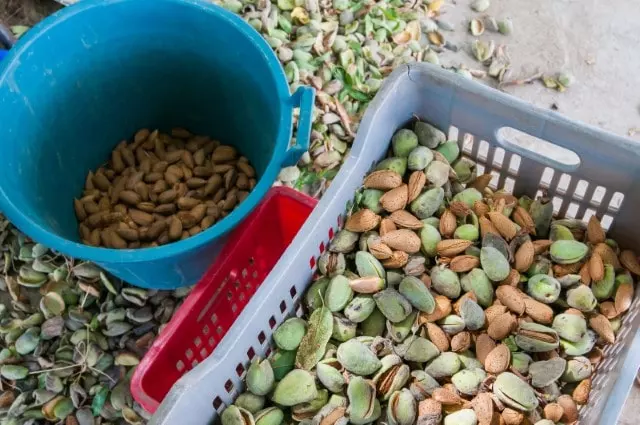
Storing Almonds
You should store the almonds in shell or unshelled. For example, if you are going to consume the almonds for a few months it is best to remove the shell, if you are going to store them for many months, I recommend leaving the shell on the almond.
Unshelled almonds last about 8 months and shelled almonds last a little over a year. Store almonds in hermetic jars or a hermetic container, because nuts absorb odors. Avoid placing almonds near herbs or any food that gives off too much odor.
If you like nuts, we recommend our two articles How to Harvest Black Walnuts and How to Grow Pistachios Indoors.
